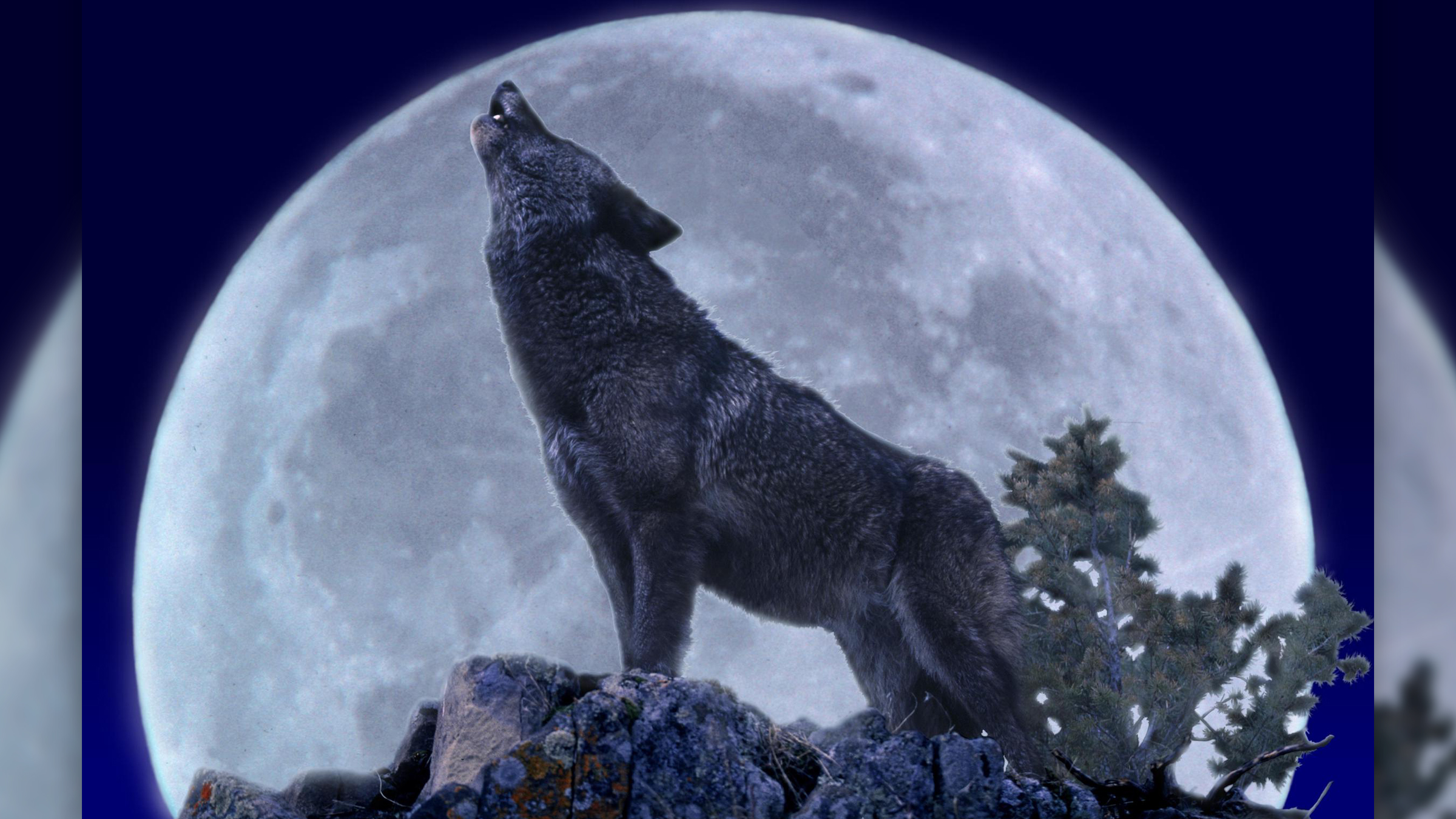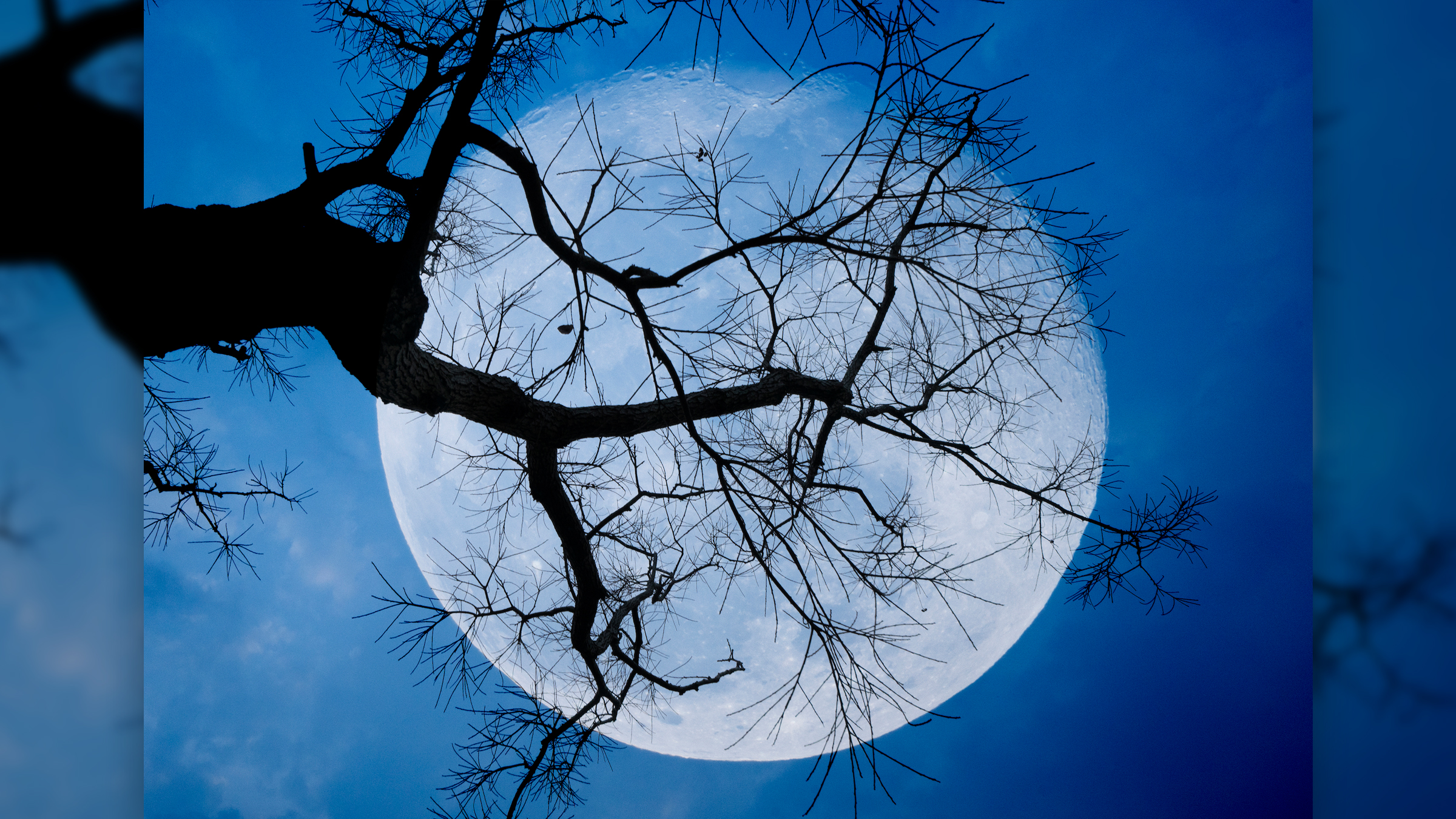Here's how to watch the full 'wolf moon' this week
The moon will appear full from Wednesday through Saturday.

January's full moon, popularly known as the wolf moon, is almost upon us. Here's "howl" to watch it shine brightly this Thursday (Jan. 28).
The moon will be at its fullest for just an instant — on Thursday, that happens at 2:16 p.m. EST (19:16 UTC). But, as with every full moon cycle, the moon will appear full for about three days, from Wednesday through Saturday morning (Jan. 27–30), according to NASA.
The full moon will be so bright, you can just gaze upward at the (hopefully clear) night sky to see it. If you have access to binoculars or a telescope, you may be able to spot some lunar features, such as the Sea of Tranquility or the bright Copernicus Crater, NASA reported.
Related: Gallery: Photos of the fantastic full moon
If it's a cloudy night, you can always take a virtual tour of the moon with Moon Trek, managed by NASA's Jet Propulsion Laboratory in Pasadena, California. With Moon Trek, it's possible to view the historic landing sites from the Apollo missions, as well as other moonscapes.
To see a live feed of January's full wolf moon rising over Rome, the Virtual Telescope Project has a free webcast, which begins at 10:45 a.m. EST (15:45 UTC) on Thursday and is run by Italian astrophysicist Gianluca Masi.

So, just how did January's full moon come to be called the wolf moon? Look no further than the now-defunct Maine Farmer's Almanac, which gave each month's full moon a name gleaned from the Native Americans, most likely from the Algonquin language, according to NASA. However, the Almanac took many liberties in its naming scheme, and it's not clear where the name "wolf moon" originated.
Sign up for the Live Science daily newsletter now
Get the world’s most fascinating discoveries delivered straight to your inbox.
"From what I have learned about traditional names given to full moons prior to the introduction of modern timekeeping, local leaders would usually decide on the name of the moon based on conditions at the time," Gordon Johnston, a program executive at NASA Headquarters, wrote in a post. "These cultures did not generally need calendars that specify exact dates far in advance. Full moon names were used to describe and remember what happened in the past and to remind of what was likely to come in the near future."
Moreover, "there are many different Native American names for the full moons," Johnston noted.
In this case, the wolf moon's name may have been an old European name for the midwinter moon, Johnston wrote. And the Sioux name for January's moon translates to "wolves run together moon," according to Indian Country Today, a news agency that covers the Indigenous people of the Americas.
Wolves don't necessarily howl at the moon, but rather howl to express usually one of two things — to alert a rival pack that's trespassing on their territory or to guide a lost wolf back to the pack, Live Science previously reported.
However you choose to watch the wolf moon, we hope you don't get lost, although you could howl at your friends or family if you get separated. Or you could just text them and, while you're at it, make a date to see the next full moon, also known as the snow moon, which will shine bright on Feb. 27.
Originally published on Live Science.

Laura is the archaeology and Life's Little Mysteries editor at Live Science. She also reports on general science, including paleontology. Her work has appeared in The New York Times, Scholastic, Popular Science and Spectrum, a site on autism research. She has won multiple awards from the Society of Professional Journalists and the Washington Newspaper Publishers Association for her reporting at a weekly newspaper near Seattle. Laura holds a bachelor's degree in English literature and psychology from Washington University in St. Louis and a master's degree in science writing from NYU.









